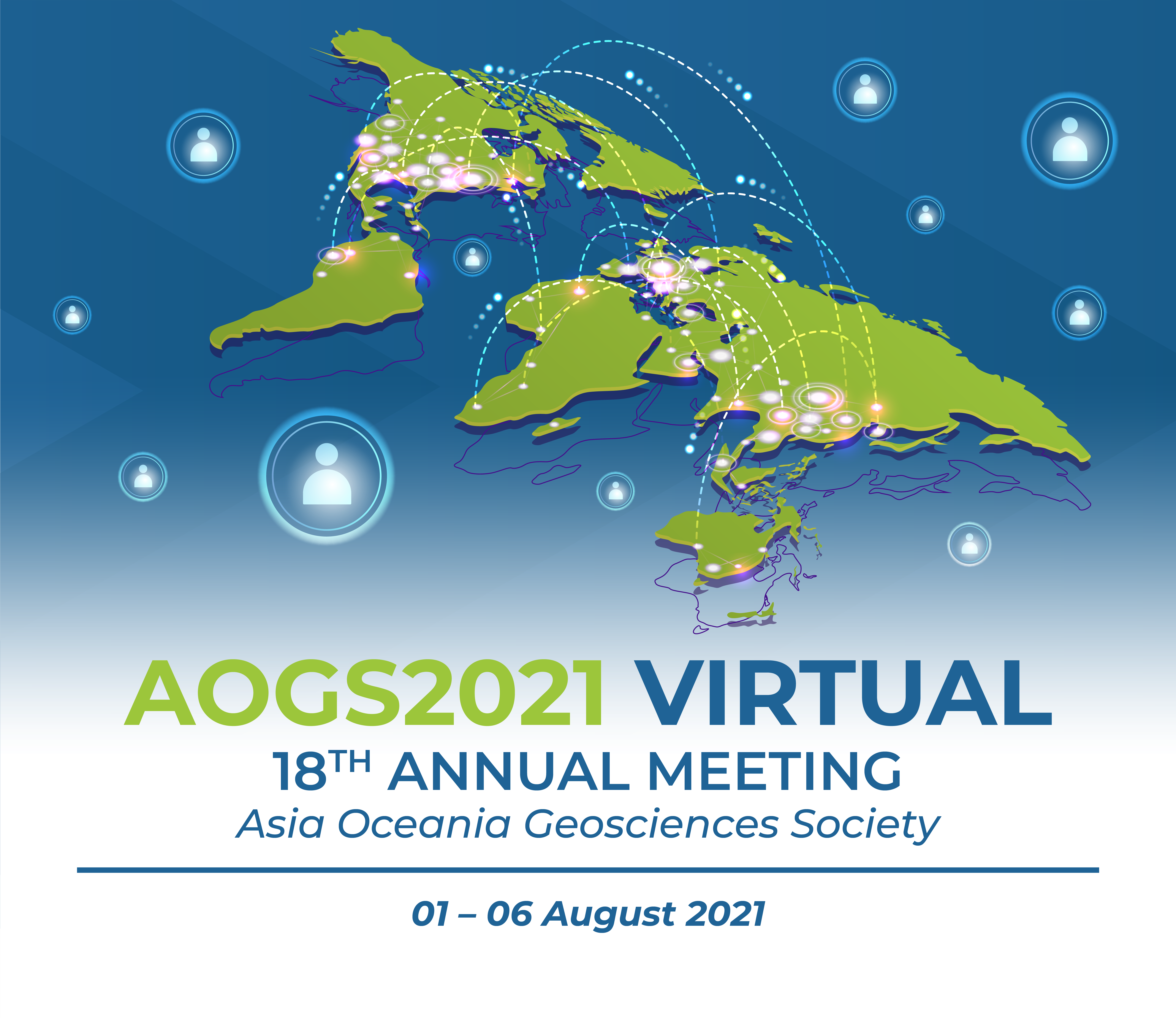

*Attend these AOGS2021 Webinars Free! – Registered Attendees Only
All AOGS e-news subscribers are eligible to attend. Please help us forward this information to your friends and
professional contacts. If not yet a subscriber, they need sign up for an account on MARS to receive
the complimentary invite. Not yet a subscriber?
Sign up Here to Receive Your Complimentary Invitation
Axford Lectures | Medal Lectures | Section Distinguished Lectures
All times shown are Singapore Standard Time (GMT+8)
| IG Section Lectures & Meeting | Room: WB1 |
| Transition | 13:00 – 13:30 |
| IG Kamide Lecture | 13:30 – 14:15 |
| IG Distinguished Lecture | 14:15 – 15:00 |
| IG Section Meeting | 15:00 – 16:00 |

Mon-02 Aug, 13:00 – 16:00, Room: WB1
Kamide Lecture - IG (Save a seat)
“Linking the early development of Paleozoic reefs to marine oxygenation”
Jeong-Hyun LEE
Chungnam National University
The early Paleozoic witnessed the two largest animal diversification events in geologic history: the “Cambrian Explosion” and the “Great Ordovician Biodiversification Event”. In reef ecosystems, this time interval is marked by a prolonged transition from Precambrian-style microbial-dominated reefs to Phanerozoic skeletal-dominated reefs.
Both microbial carbonates and skeletal reef-builders formed these early Paleozoic reef ecosystems, but their composition varied. Six reef intervals are recognized during this time: I, Late Ediacaran (~550–541 Ma) microbial reefs with skeletal organisms of unknown affinity (Cloudina, Namacalathus, Namapoikia); II, Earliest Cambrian (541–525 Ma) microbial reefs with rare worm-like “Ladatheca”; III, Microbial-archaeocyath sponge reefs together with radiocyaths and, coralomorphs in the early Cambrian (525–510 Ma); IV, Microbial-lithistid sponge reefs in the mid-late Cambrian (510–485 Ma); V, Microbial-lithistid sponge reefs augmented by Calathium, pulchrilaminids, bryozoans, corals/coralomorphs, and stromatoporoids in the Early and early Middle Ordovician (485–460 Ma); VI, Skeletal-dominated reefs mainly constructed by stromatoporoids, corals, and bryozoans, together with microbial carbonates, in the late Middle to Late Ordovician (460–444 Ma).
Overall reef evolution is closely linked with marine oxygenation mediated by global temperature fluctuations. Oxygen increase was a primary driver of animal diversification during the late Ediacaran and early Cambrian, leading to the “Cambrian Explosion” and initial rise of skeletal reefs (Intervals I–III). The mid-late Cambrian interval, between the “Cambrian Explosion” and the “Great Ordovician Biodiversification Event”, is occupied by low diversity reefs of lithistid sponges and microbial carbonates (Interval IV). This prolonged “reef gap” was caused by elevated “greenhouse” conditions, temperatures lowered oxygen solubility in sea water and induced widespread thermal stratification.
Extensive epeiric carbonate platforms, that developed together with sea-level rise, further limited shallow-water circulation. These conditions promoted marine dysoxia and hypoxia, causing episodic animal extinctions and limiting skeletal reef-builders other than lithistid sponges. Sea water oxygenation during the Ordovician, as CO2 decline lowered temperatures, resulted in the “Great Ordovician Biodiversification Event”. New skeletal organisms diversified reef systems (Interval V) and soon dominated microbial carbonates (Interval VI).
Biography
Jeong-Hyun Lee was born in December 1985 in South Korea. He obtained his B.S. (2008), M.S. (2010) and Ph.D. (2014) in Earth and Environmental Sciences from Seoul National University, South Korea. He is now an associate professor at Chungnam National University, South Korea. His research interest focuses on the lower Paleozoic strata, especially reefs, sedimentary processes and environmental changes, and invertebrate paleontology.